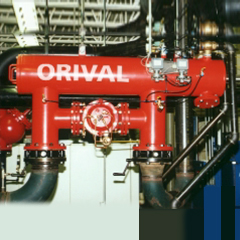Articles
Trending Automotive Electronics

What runs in your mind when you hear about Automotive Electronics? A musical system that connects to your mobile, airbags and an electronically controlled steering? You are on the right track but it has a lot more electronics than you probably realize. Automotive Electronics includes everything right from the headlight and LED brake light to the seat belt alarm inside your car. If you give it a thought, every module in your car is a high tech electronic gadget. Know more about your vehicle and be updated with the latest technology and trends.
The electronic components in a car include Engine Ignition, Fuel Injection, Anti-lock Brakes, Steering Control, Collision Avoidance Systems, Seat Control, Air Conditioning, Navigation System, Safety Controls, Security Alarms, Transmission Controls, Music System, Bluetooth-capable, USB-capable, WiFi-capable, Head and side lights.
Automotive Electronics are electrically generated systems used in vehicles. The increasing speed of innovation in electronics for the automotive industry will pave the path to utilize their time in transit to enjoy novel services. As a result, people will have more time to invest in personal activities. Therefore, an electronically smart car shall always have enhanced features. Demand for safety and luxurious features from consumers are expected to drive the automotive electronics market in future.
Automotive Camera:
Automotive cameras are equipped with an LED flicker mitigation function that reduces flickering when shooting signs and traffic signals, as well as an HDR function capable of 120 dB wide dynamic range shooting. The CMOS (complementary metal-oxide-semiconductor) image sensor is designed for use in forward-sensing cameras for advanced driver assistance systems (ADAS) and for camera monitoring systems. Autonomous vehicle runs purely with the help of powerful automotive cameras. These are types of automotive cameras side-view cameras, interior-view cameras, forward-view cameras, rear-view enhancement, and corner-view cameras.
Demand for sensor cameras for the purpose of advanced driver assistance systems (ADAS) is increased significantly, with a rising focus on safety measures on the back of road accidents. Automotive cameras have evolved considerably for integration with safety systems of vehicles.
Advanced Motor Control:
Digital vector control algorithms capable of delivering full torque with acceleration and deceleration at rates that can be precisely managed. The Intelligent Drives Kit combines a full complement of development software, motor control reference designs and hardware, including the latest Analog Devices data converters All Programmable SoC based on ARM Cortex-A9 dual-core processors. Cars already are controlled by computers. But motor management systems will get more sophisticated. Ford recently showed how a car’s computers can sense the drive and adjust the motor accordingly. If a daily commute takes the vehicle on crowded city streets, the car knows that, and it makes the motor use less gas, for instance.
Black boxes:
An event data recorder (EDR) also informally known as an automotive "black box", it is a device installed in some automobiles to record information related to vehicle crashes or accidents.
In modern diesel trucks, EDR triggered by electronically sensed problems in the engine which are usually called faults, or a sudden change in the wheel speed. One or more of these conditions may occur because of an accident. Information from these devices can be collected after a crash to determine what the vehicles were doing before, during and after the crash.
Gesture Control:
Gesture-based control in the automotive is a trending feature. The detection zone of gestures is focused on the steering wheel with a time-to- flight sensor, which is integrated into the instrument. It identifies the motion of the hand and turns it into actions. The driver can navigate through the menus by swiping up and down and confirm the selection with a brief tapping motion. The time-of-flight sensor comprises a 3D camera system with an open 3D image sensor which converts the infrared signal into a 3D image. Consequently, the hand positions and gestures of the driver are detected and converted into actions.
Augmented Reality App:
The automotive industry is home to some of the most significant and exciting technological advancements. Augmented Reality (AR), Many leading automotive companies are preparing their own AR app to help their customers by providing in-depth and detailed information.




